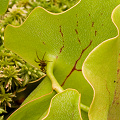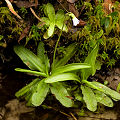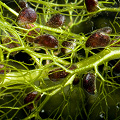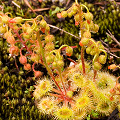This is the third attribute of a carnivorous plant:
A pathway is available that allows nutrients to be absorbed into the plant, thus contributing to the plant's competitive and reproductive fitness. For most carnivorous plants, nutrients are transmitted via diffusion through trap fluids. In some cases (i.e., Roridula), nutrients are first passed through the digestive tracts of mutualistic organisms and then deposited, as fecal matter, onto the leaves, whereupon they enter the plant through cuticular gaps.
The nutrients pass into plants by three mechanisms, depending upon the plant.
A pathway is available that allows nutrients to be absorbed into the plant, thus contributing to the plant's competitive and reproductive fitness. For most carnivorous plants, nutrients are transmitted via diffusion through trap fluids. In some cases (i.e., Roridula), nutrients are first passed through the digestive tracts of mutualistic organisms and then deposited, as fecal matter, onto the leaves, whereupon they enter the plant through cuticular gaps.
The nutrients pass into plants by three mechanisms, depending upon the plant.
- Some plants have specialized cells or cellular structures to allow for the absorption of nutrients. Examples include the stalked or sessile glands of Drosera or Pinguicula, or the quadrifid glands inside the bladders of Utricularia.
- Nutrients may enter the tissues directly. The interior pitcher walls of Sarracenia lack the waxy protective layer called a cuticle. This allows the nutrients from the pitcher fluids to enter the plant.
- Nutrients may enter the tissues through specialized gaps in the cuticle. In Roridula, breaks in the cuticle allow the nutrients from hemipteran fecal matter to enter the plants. Cuticular gaps are a big liability for plants because they expose the plant to dehydration or invasion by pests and disease, so a plant will not have such gaps unless they confer a real benefit to it.
Did you notice that, in my definition, I note that the nutrients must confer a benefit to the plant? This is important because it is the evolutionary drive behind selecting for carnivory. Plants will not evolve to be carnivorous if there is plenty of food present for it in the soil! For this reason, I don't think we will ever discover a carnivorous plant that occurs in rich, fertile soils.




No comments:
Post a Comment